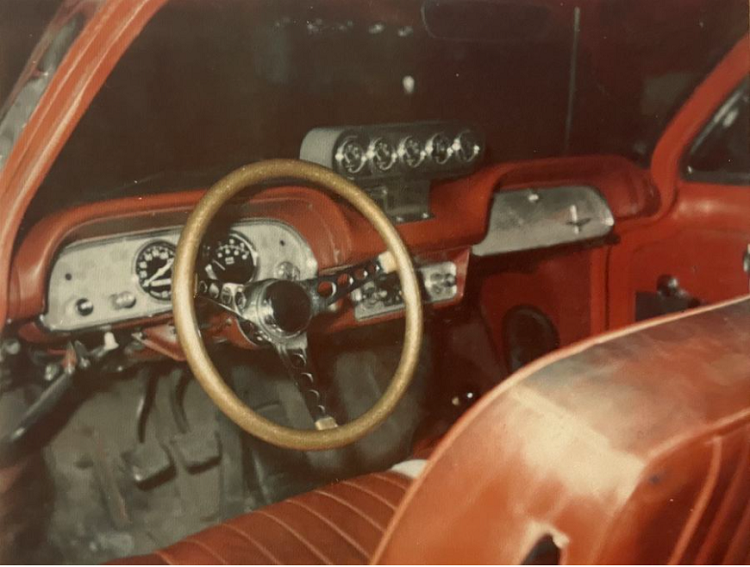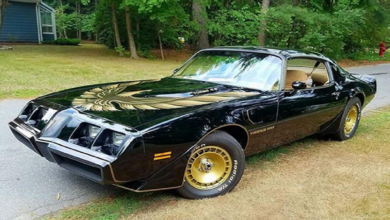Could This Have Been The First Chevrolet Corvair Powered By A Small-Block V-8?
Eighty-year-old Lee Egleston can say for sure that the 1963 1962 Chevrolet Corvair that he once owned was the most dangerous car he ever drove. Not because of the swing-axle rear suspension that Ralph Nader found fault with (or, at least, not just because of the swing-axle rear suspension). Rather, what made it the most dangerous car he ever drove was the 327-cu.in. small-block Chevrolet V-8 that he put right where the rear seats should have been.
“It was just another one of my hare-brained ideas,” he said.
The idea came about, according to Egleston, in 1968, after he removed the perfectly good 327 from a 1965 Chevrolet that had other mechanical issues and looked around for something to do with the small-block. He already owned the Corvair, but he wanted more power from it than the stock air-cooled six-cylinder could provide, but how to mate one to the other?
Fortunately, he had access to all the tools he needed to fabricate mounts and adapters in his family’s metal fabrication shop. But if he were to simply mount the 327 to the Corvair’s transaxle, he’d have an extremely tail-heavy vehicle. Plus, he’d either have to rebuild the 327 as a reverse-rotation engine or flip the diff because the Corvair engine rotates opposite pretty much every other internal combustion engine out there.
Instead, he decided to mount the 327 in a mid-engine configuration by removing the Corvair transaxle’s front cover cap and replacing the main transmission shaft with the input shaft from a standard transmission. With the help of a 1/2-inch-thick adapter plate, he then bolted a stock Chevrolet bellhousing to the front of the transaxle and the 327 to the bellhousing.
“The transmission in the Corvair never moved,” he said. “That way, I could keep the shift linkage and everything else all the same.”
To cool the 327, he fit a Cobra radiator under the decklid. Headers, gauges from the 1965 Chevrolet, custom front engine mounts were all it took to get the Corvair running again. He didn’t even bother installing a separator between the engine and cabin.
“You needed the windows open to drive it,” he said. “That Indy-style exhaust generated so much heat it was mind-boggling. That, and the noise.
“One also needed a set of brown pants to drive the Corvair. “Because the car had those swing axles in back, as soon as the torque hit the rear wheels, it would rock the car to the left and change the caster on the rear wheel,” Egleston said. “You’d have to turn the steering wheel hard to the left to keep it under control.”
Egleston got to enjoy the Corvair for about six months before a divorce forced him to sell it off. He kept in touch with the subsequent owner, who shipped off to the Army after getting in trouble with the law and left the Corvair behind parked at his grandmother’s house. The grandmother, according to Egleston, got tired of it sitting around and had the junkman haul it away. Egleston didn’t see the Corvair go through the crusher, but he assumed as much.
“It was a fun car to build,” he said. “And it was a fun and interesting and scary car to drive. It had way more power than what a person needed. Maybe if I’d have started with a later independent rear suspension Corvair, it would have been a better car to drive, but the ’63 is what I had.”Other mid-engine small-block Corvairs have popped up since then, but Egleston believes his was the first. Is he right?








Why is it I always really feel like you do?
http://slkjfdf.net/ – Ikakigi Afoyal swk.ndct.postsshare.com.lrk.rd http://slkjfdf.net/
http://slkjfdf.net/ – Ibapib Ujuikitum nzm.wfdx.postsshare.com.bsu.ng http://slkjfdf.net/
http://slkjfdf.net/ – Unugicaso Ofugaxe bqu.fxvu.postsshare.com.gbq.dt http://slkjfdf.net/
http://slkjfdf.net/ – Abosifiej Uditebafo nin.zkes.postsshare.com.lvm.pd http://slkjfdf.net/
http://slkjfdf.net/ – Usenifu Atyedeyus rft.krlj.postsshare.com.vqi.jd http://slkjfdf.net/
http://slkjfdf.net/ – Emonan Udoluw osh.eoyr.postsshare.com.whd.ek http://slkjfdf.net/
http://slkjfdf.net/ – Agzfiti Aonijuwih qxh.tqdn.postsshare.com.pxo.iw http://slkjfdf.net/
http://slkjfdf.net/ – Ubezam Iuwoyif hxh.jydd.postsshare.com.bgx.fu http://slkjfdf.net/
http://slkjfdf.net/ – Anutozix Ajaohen bmk.zaln.postsshare.com.kxk.gp http://slkjfdf.net/